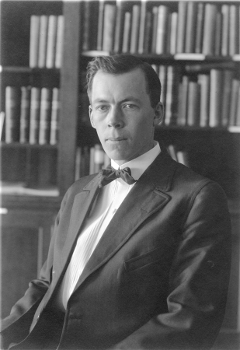Edison Pettit: American astronomer, who served on the staff of Mount Wilson and Palomar Observatories.
Credit: University of Chicago Photographic Archive, apf6-04193, Special Collections Research Center, University of Chicago Library.
I’m going to go way, way back, now. There’s a really interesting human lesson in how infrared astronomy developed. In 1929, there were infrared detectors on the 100-inch telescope on Mount Wilson. They were really quite good. They had a very clever scheme where they could record the signals on photographic plates and then measure them carefully afterwards. The measurements they made were actually quite accurate. Their detectors were sensitive and stable. The biggest limitation to interpreting those results was actually the quality of the visible-light measurements to which they were comparing the infrared measurements.
The people that did this, Edison Pettit and Seth Nicholson, published their observations. What’s interesting is that absolutely nothing happened after that. The field basically got started in 1929, and nobody really followed up. The astronomers who did follow up would start out trying to take infrared observations, and after a while they just got discouraged and quit. Everybody assumes that when infrared really got started it was because better equipment became available. It turns out, if you look in detail, that’s not true. When Harold Johnson started making infrared measurements in the 1960’s at the same wavelengths that Pettit and Nicholson were working on, the sensitivity of his instrument was basically not much better than what they had thirty years before, and his measurements were no more accurate than theirs. But contrary to what happened in 1929, the field just took off. As we have seen. Harold pulled Frank in; Frank started making measurements in other wavelength regions; the group at Caltech got started a little afterwards; not long after that the group at Minnesota formed, then the Cornell group, and others followed.


